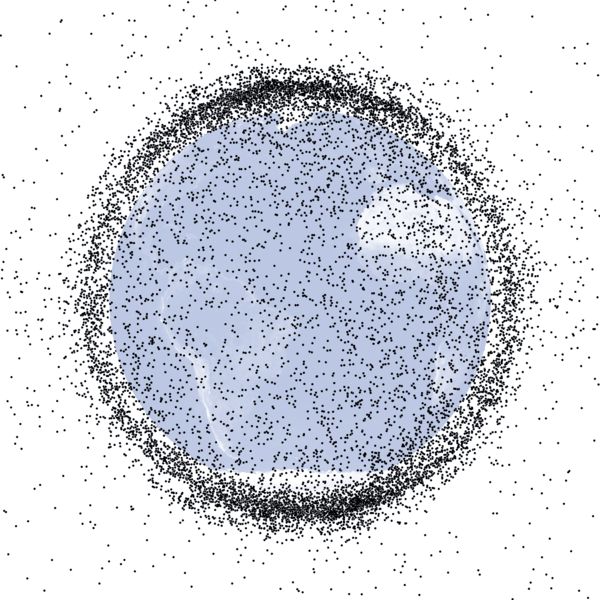How the space rubbish will destroy modern life? Kessler syndrome
Space rubbish will destroy our modern life. Kessler syndrome proposed it.
What is the Kessler Syndrome?
The Kessler syndrome (also called Kessler effect), proposed by NASA scientist Donald J. Kessler in 1978 is a scenario in which the density of objects in the low-earth orbit (LEO) is so high that collisions between objects can lead to a collision. In each collision gap debris is created which increases the probability of collision. In other words, the distribution of orbital debris can provide space activities and the use of satellites in certain orbital ranges that are impractical for many generations.

“Trash” generation and destruction
Each satellite, space probe, and manned mission has the potential to generate space debris. A stepwise Kessler syndrome becomes more likely as satellites that increase in number as orbits. By 2014, there were about 2,000 commercial and government satellites around the world. It is estimated that there are 600.000 pieces of dumps ranging from 1 cm to 10 cm and an average satellite is destroyed every year.
The most commonly used trajectories for both manned and unmanned spacecraft are low soil trajectories that cover an adequate altitude range for sufficient airflow to help keep the soil clean. The collisions in this altitude range are also less problematic because the directions and / or lower specific energies of the parts usually result in periods that are intersecting with or intersecting with the Earth.
Orbital deterioration is much slower at the altitudes where atmospheric drift is unimportant. Slight atmospheric friction, moonlighting and solar wind friction can spill up to lower altitudes where the parts finally re-enter, but this process can last for a thousand years at very high altitudes.
Implications
Kessler syndrome is laborious due to domino effect and withdrawal leaks; the collisions between large objects here cause debris from the collision force. The shrapnel can then hit other objects, producing even more space debris: if a large enough collision or explosion were to occur, such as between a space station and a defunct satellite, or as the result of hostile actions in space, then the resulting debris cascade could make prospects for long-term viability of satellites in low earth orbit extremely low. However, even a catastrophic Kessler scenario at LEO would pose minimal risk for launches continuing past LEO, or satellites travelling at medium Earth orbit (MEO) or geosynchronous orbit (GEO). The catastrophic scenarios predict an increase in the number of collisions per year, as opposed to a physically impassable barrier to space exploration that occurs in higher orbits.
The shrapnel can hit other objects that produce more space remains: if a sufficiently large collision or explosion, such as a space station and a faulty satellite, has occurred, or as a result of hostile movements in space, it can produce extremely low rates. for viability. However, even the catastrophic Kessler scenario in the LEO will be the minimum risk for continued LEOs or satellites in the Middle Earth orbit (MEO) or geosynchronous orbit (GEO). Catastrophic scenarios predict an increase in the number of collisions per year, unlike a physically unobstructed barrier of high orbiting space exploration.
 Wikimedia Commons
Wikimedia Commons
Avoidance and reduction
Designers of a new vehicle or satellite are frequently required to demonstrate that it can be safely disposed of at the end of its life, for example by use of a controlled atmospheric reentry system or a boost into a graveyard orbit.
Potential trigger
Especially large satellites could easily become a major debris contributor from a collision during the next 150 years that it will remain in orbit.
The proposed energy-efficient means of separating a spacecraft from the MEO is to shift to an orbit in an unstable resonance with the Sun or Moon which accelerates its orbit.
A technology to help cope with parts from 1 cm to 10 cm is a laser cleaner, a multimegawatt land-based laser that is free of debris: the edge of the debris struck by the laser will create a thrust force that will contract. Change the eccentricity of the remains of the part until it re-enters.


Comments